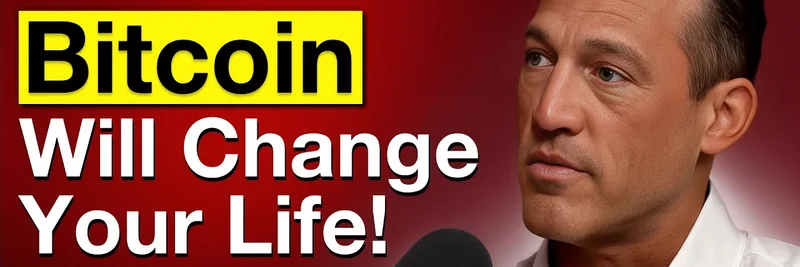Have you ever felt like the financial system is stacked against you? In a recent episode of the When Shift Happens podcast, host Kevin Follonier sits down with Bitcoin strategist Mark Moss to unpack just that. Posted on X (formerly Twitter) by @KevinWSHPod, this thread highlights episode 141, where Moss dives deep into why the fiat system traps most people and how Bitcoin offers a way out. As someone who's navigated the wild world of crypto, including meme tokens, I see a lot of parallels here that can help us all level up our game.
Understanding the Fiat Trap
Fiat currency, like the US dollar, is government-issued money not backed by a physical commodity. Moss explains how this system is designed to keep the average person in a cycle of consumption and debt. After losing everything in the 2008 financial crisis, Moss learned the hard way that inflation isn't the 2% we're told—it's more like 10-15% annually, eroding your savings faster than you think.
He points out that in fiat, you don't truly own your assets. Your stocks, cash, even real estate can be influenced or seized by regulations and policies. This "rigged" setup encourages short-term thinking, like chasing quick wins, which sounds a lot like the hype around some meme tokens. But Moss argues for a shift: think like a creator, not a consumer.
Bitcoin: The Path to Freedom
Bitcoin, often called digital gold, fixes this by being decentralized and scarce. With its supply capped at 21 million coins and halvings every four years reducing new supply, Bitcoin counters inflation. Moss shares how owning Bitcoin changed his life, forcing better decisions because its value appreciates over time.
In the episode, he projects Bitcoin hitting $1 million by 2030 and a staggering $45 million by 2050. These aren't wild guesses; they're based on adoption rates, global liquidity, and historical cycles. For meme token fans, this is a reminder that while memes can pump fast, building wealth often comes from understanding sound money principles like those in Bitcoin.
Key Takeaways from the Timestamps
The thread and YouTube description provide handy timestamps to jump into specific topics:
- Stablecoins vs. Dollars (1:56): Why stablecoins might be a better hedge than fiat.
- Who Are You (5:28): Moss' background and his "chip on the shoulder" mindset.
- No Retirement = Paranoia (14:23): The fear of never having enough in a depreciating system.
- Don't Own Anything (22:10): Challenging property rights in fiat world.
- Why Own Anything But Bitcoin (28:22): Shifting investments toward BTC.
- Bitcoin to $1M by 2030 (45:39): The math behind the prediction.
- 4-Year Cycle of Bitcoin (58:27): How halvings drive price action.
These segments are gold for anyone in crypto, showing how macro trends affect everything from Bitcoin to meme coins.
Applying This to Meme Tokens
At Meme Insider, we're all about meme tokens—the fun, viral side of blockchain. But Moss' insights remind us that memes thrive in the same ecosystem as Bitcoin. The fiat system's flaws push people toward crypto, including memes as entry points. However, to avoid the "get rich quick" trap Moss warns about (like 75% of lottery winners going broke), apply Bitcoin's long-term thinking to your meme plays. Diversify, understand the tech, and build rather than just speculate.
If you're into meme tokens, consider how Bitcoin's stability can balance your portfolio. Tools like Jupiter Exchange or Paradex, mentioned as partners, can help trade memes efficiently on chains like Solana.
Final Thoughts
This episode is a wake-up call for crypto enthusiasts. Watch the full thing on YouTube or catch the thread on X. As Moss says, focus on creation and long-term value. In the meme world, that might mean supporting projects with real community utility, not just hype.
What do you think—will Bitcoin hit those price targets? Drop your thoughts in the comments, and stay tuned to Meme Insider for more crypto insights.


